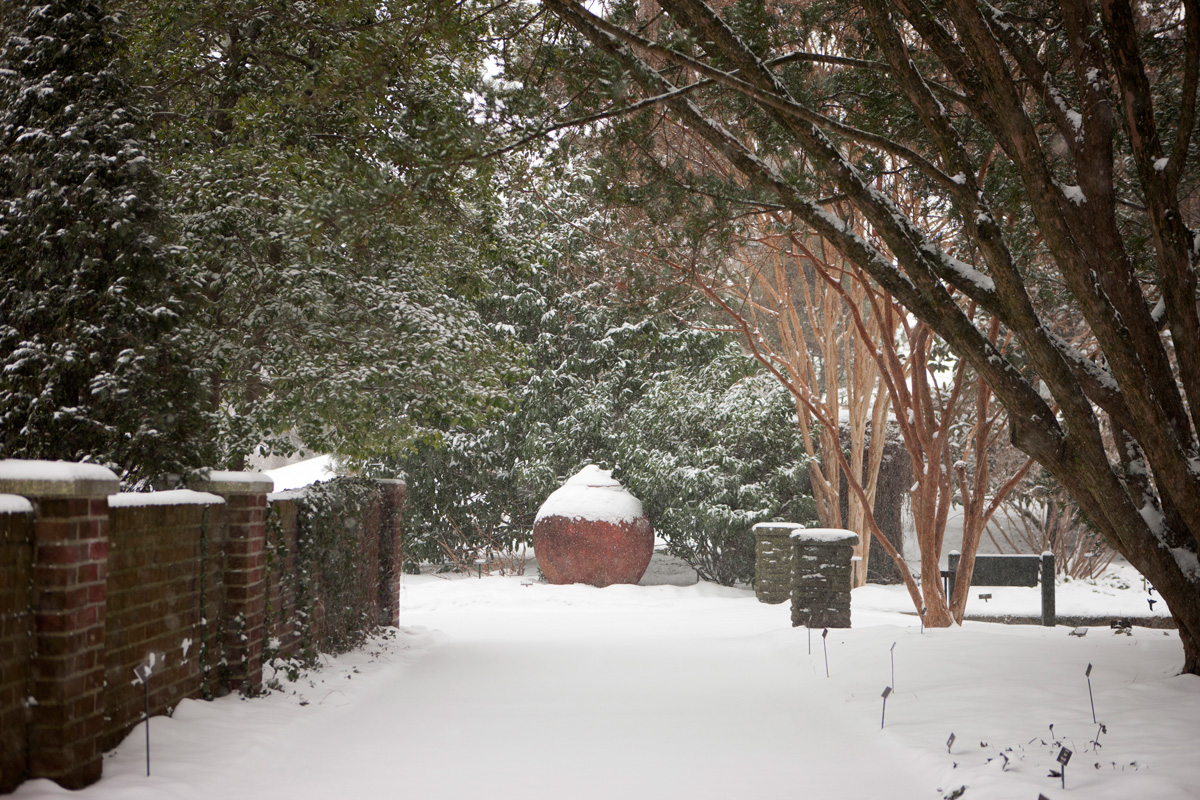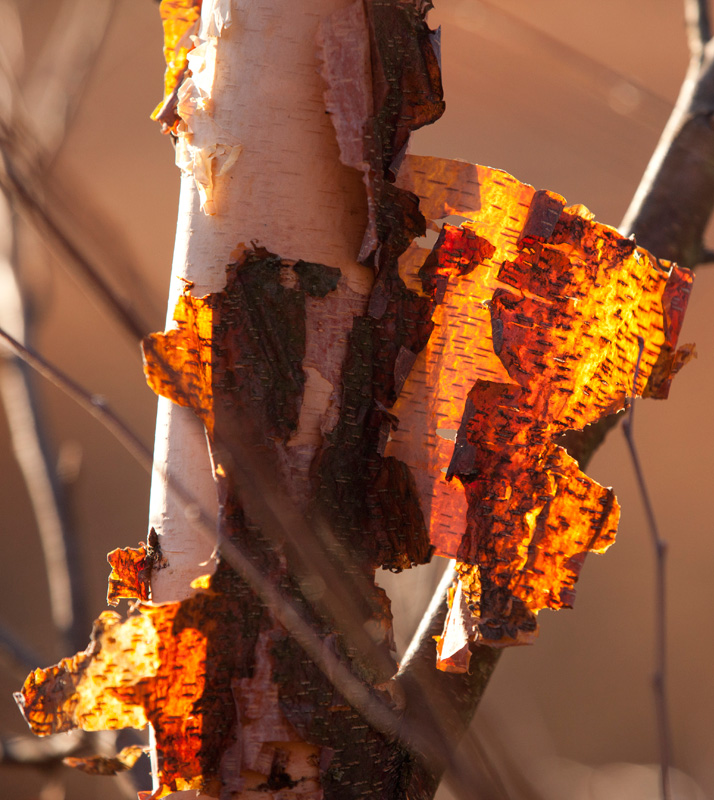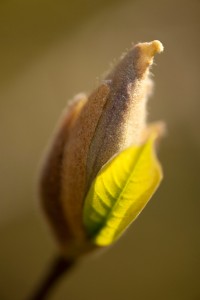In the Alive of Winter
Posted in Horticulture on February 23 2015, by Kristine Paulus
Kristine Paulus is NYBG’s Plant Records Manager. She is responsible for the curation of The Lionel Goldfrank III Computerized Catalog of the Living Collections. She manages nomenclature standards and the plant labels for all exhibitions, gardens, and collections, while coordinating with staff, scientists, students and the public on all garden-related plant information.

A non-horticulturist friend recently asked me “So, what do you do in winter? The Garden must closed because everything is dead, right?”
Wrong! I assured this silly weather wimp that we do not overwinter in any hibernacula and there is actually a lot to see during wintertide, which just happens to be my favorite time of year. For those with a serious aversion to the fourth season, or perhaps suffering from chionophobia, they can always take shelter in the gorgeous glasshouse that is the Enid A. Haupt Conservatory. There, they will see the remarkable pageant of tropical gems that will alleviate their shivers, from our most recent exhibition, Wild Medicine in the Tropics, to The Orchid Show: Chandeliers, opening soon, as well as the permanent collection of plants.
However, as someone who particularly enjoys horticulture al fresco, I love to remind the winter naysayers that the sun is actually closer to us these months and that many of our beloved perennials require a period of vernalization in order to flower in the spring. If those fun facts fail to impress, you can (and should!) just get out and see for yourself the many cool plants the Garden’s winter landscape has to offer. Remember, you got to be cold to be cool.

Sure, there are great evergreen conifers (what my aforementioned friend would call “Christmas trees”) to enjoy in winter, but without the distraction of leaves, the bark of many deciduous trees stands out in an eye-catching array of colors and patterns. While you’re exfoliating your own skin this winter, commiserate with trees that have a dramatically peeling epidermis. Look for the paperbark maple (Acer griseum) across from Seasonal Walk and river birch (Betula nigra) in the Native Plant Garden with their translucent outer layers glowing like thin sheets of amber in the sun. Throughout the Garden you’ll recognize bright and aptly named paper birch (Betula papyrifera) resembling wintry woodcuts with its stark black and white lines of horizontal lenticels. If you’re freezing, ask a shagbark hickory (Carya ovata) to lend you its woolly-looking coat. Other notable skins include red snake-bark maple (Acer capillipes) and moosewood or striped maple (Acer pensylvanicum) whose common names drop hints about their appearance.
Many of us are familiar with the “camouflage” bark pattern on the London planetree (Platanus × hispanica), an allée of which greets visitors entering through Conservatory Gate, but variations on this can be seen on eastern sycamore (Platanus occidentalis), kousa dogwood (Cornus kousa), Japanese stewartia (Stewartia pseudocamellia), and crape-myrtle (Lagerstroemia indica). The Pinus bungeana (lacebark pine) by the Reflecting Pool not only sports the camo look but also has gleaming silvery bark so metallic you can practically see your own reflection. Of course, this barely scratches the phloem on this topic—we could wax at length about bark, enough to write a book on that topic. In fact, you can find many in the LuEsther T. Mertz Library.
For further proof that everything is not—and in fact nothing is—dead, there are the winter-flowering wonders to boggle the mind! Chinese witch-hazel (Hamamelis mollis) is exploding with super fragrant and bright yellow spidery flowers along Conservatory Drive, as is the exotic-looking fragrant wintersweet (Chimonanthus praecox) in the Home Gardening Center. As you walk around the Garden, be sure to look down to see snowdrops popping out through the snow (perfectly normal for Galanthus sp.).

Winter is also a time of fervent promise. Many trees and shrubs develop their buds in the fall and as they make their way toward spring, they take on visually interesting traits. Pussy willows may get all the buzz with their cute fuzz, but check out the supersize buds on magnolias in the Magnolia Collection in the eastern part of the Garden between Twin Lakes and the Family Garden. I dare you to resist petting them. The Persian ironwood (Parrotia persica) by the entrance to the Benenson Ornamental Conifers is about to burst open with its bright red sea urchin-shaped flowers (another two for one here—it has camouflage bark!). Seriously silky tassles are swelling on the Ladies Border paperbush (Edgeworthia chrysantha) and Viburnum × bodnantense ‘Dawn’ will likely pleasure our olfactory glands before the last snowflake has melted.
There are many adages and proverbs about acting early—some will get you worms, some will make you healthy, wealthy, and wise. I don’t know if one who hesitates will be lost in the Garden, but I am certain that they will definitely miss out on all the exciting winter botanical action.


Wonderful article and Stunning Photos!
Thank you!